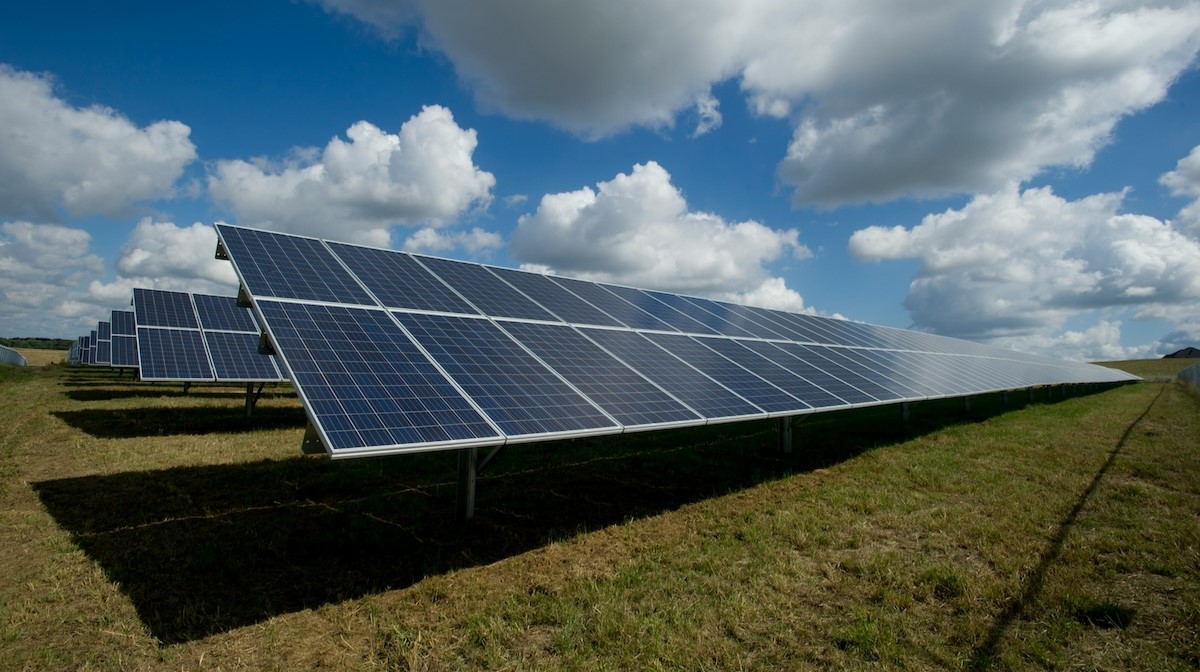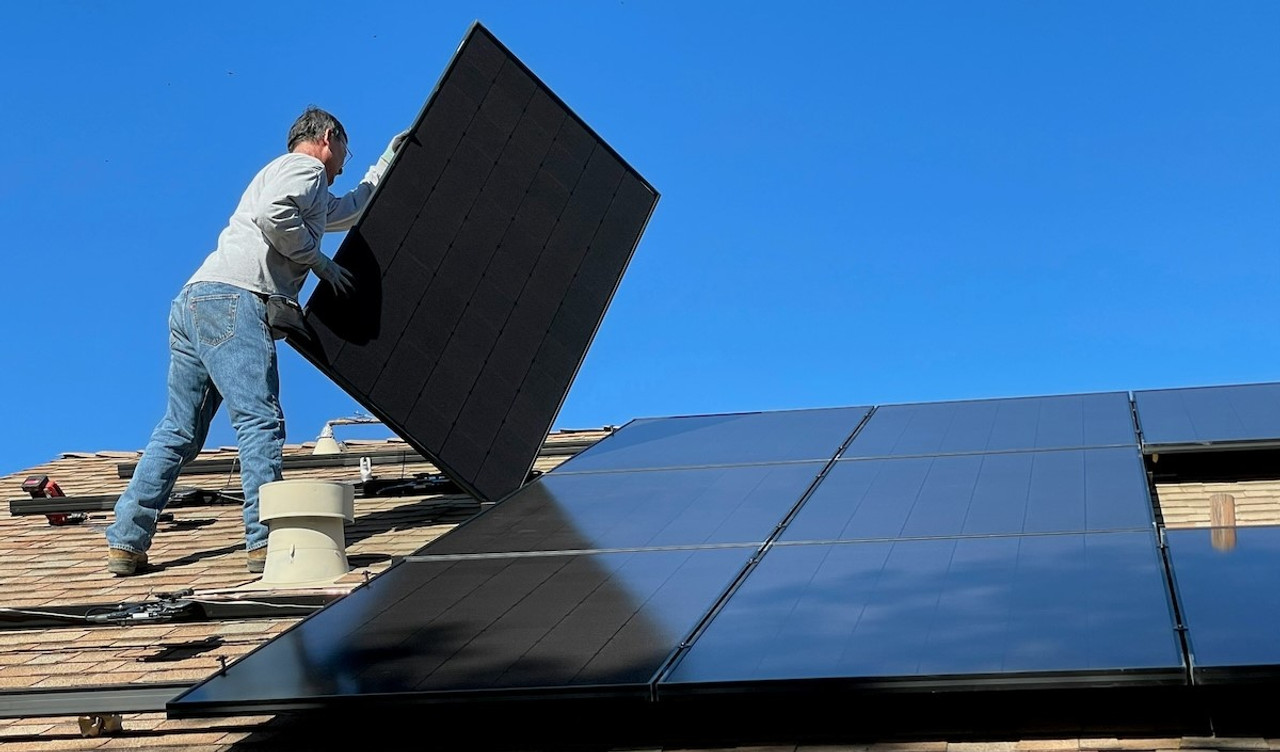How to Install Solar Panels on a Roof: A Step-by-Step Guide
Installing solar panels on roofs offers myriad advantages, both economically and environmentally. If done with a meticulous and well-thought-out approach, it can be very beneficial. Solar rooftop panel installation promotes curbing carbon and greenhouse emissions and contributes to renewable energy usage.
The rooftop solar panels are space-saving, cost-efficient aids that increase the roof's strength and reduce your electricity bill by ensuring abundant energy. Let's discover eight steps for installing solar panels on the roof, helping you reap optimal benefits from installing solar rooftop panels.
How to Install Solar Panels on the Roof
How you install solar panels is determined by factors like the roof's inclination and area. The installation process might seem to be difficult, but it is straightforward — provided you are abreast with the necessary steps. Here is a stepwise description of how to install solar panels on the roof:
Step 1: Identify the Roof Space
Solar rooftop panels are installed using solar mounts. Identifying the area for solar panel installation helps determine how many solar mounts you need. Also, while identifying the total rooftop area, you can specify the extent of shade-free area.
Step 2: Inquire the Roof Condition
Ascertain the endurance capacity of the roof, as the solar panels are bound to weigh heavy on it. To avoid a collapse, you must inquire into the durability of your roof. Also, ensure cleanliness and orderliness for effortless solar rooftop installation.
Step 3: Ensure Proper Transmission of Conduit
Solar conduits are electrical wires that run from your solar panels (solar conduits) to your house. Make sure these solar conduits properly run across the roof before attempting solar rooftop installation to avoid short circuits or damage.
Step 4: Establish a Solar Platform
Solar rooftop panels stand on solar platforms. A powerfully built solar platform will ensure ease of solar panel installation. A sturdy solar platform will support, shield, and stabilize solar panels, allowing them to make the most of the available sunlight without damage or impairment.
Step 5: Arrange the Solar Rooftop Panels
Arrange the solar panels according to the decided directions. By arranging the panels and ensuring their association, you can identify the required number of solar panels in a row.
Step 6: Link Solar Panels with Solar Inverter
Connecting solar panels and solar inverters requires your meticulous attention and requires you to switch off the inverter during installation. Ensure the solar panel's positive wire is connected to the positive end of the inverter.
Similarly, connect the solar panel's negative wire to the inverter's negative end. The solar panel's output series must also be connected to the inverter's input. Renogy's 3500W 48V Solar Inverter Charger is a powerful solution that combines solar charging, AC/generator battery charging, and battery inverting into one and takes an off-grid system to the hybrid level.
Step 7: Link with Battery & Home Electricity
While connecting the solar inverter and the battery, connect the positive end of the inverter to the battery's positive terminal and reciprocate for the negative terminal. Accurate connection will ensure proper recharging of the grids and solar panels.
Further, to link the solar inverter to the home electricity, plug in the main switch on the board, and the output wire will disseminate the electricity throughout your house.
Step 8: Ensure Analytical Testing & Activation
In the final testing phase of your solar rooftop installation process, ensure that all electrical connections are correctly attempted. During the final test, ensure an analytical inspection to avert any short-circuiting and damages. After analytical testing, activate the solar panel and consider checking if all panels are up and running.
Being well-informed and attentive throughout the process of installing solar panels on the roof will ensure ease and effectiveness in installation and optimal outcomes.
Ground-Mounted vs. Rooftop Solar Panels: Pros and Cons
Out of the various types of solar panels, we have narrowed the list down to rooftop and ground-mount solar panels. Roof-mount solar panels, for example, can be easily installed on the rooftops of houses or commercial buildings.
On the other hand, the ground mount is when the solar panels are secured to a rack structure connected to the ground with the help of steel beams or another type of metal post. Here are a few considerations before putting your finger on one of them:
Roof Mount Solar
A roof-mount solar system is a photovoltaic (PV) system that generates electricity through solar panels mounted on a rooftop. Owing to their easy installation and low maintenance, roof-mount solar panels are ideal for residential and commercial purposes.
Pros:
- Roof-mount solar panels are cost-efficient and space-saving, ideal for smaller economic conditions and limited space locations.
- Roof-mount solar panel installations are less intrusive and invasive, and there is no need for extensive pre- and post-installation work or construction.
- Roof-mounted solar panels add aesthetic appeal and blend seamlessly with roofs, making them ideal for residential rooftop surfaces.
- Being mounted on the roof, they are safely out of reach for vandalism or theft.
Cons:
- Rooftop solar panels cannot be integrated with just any rooftop and require an unshaded, south-facing roof for optimal performance.
- Despite being economical, the upfront cost of installing rooftop solar panels is still high.
- Its performances vary with weather conditions.
Ground-Mounted Solar
A ground-mounted solar panel is set up on the ground on a standard pole-mount installation. A few variants of ground-mount solar panel systems change their facing according to the sun's position to ensure maximum exposure to sunlight.
Pros:
- Ground-mounted solar panels ensure flexibility in positioning, provided the position ensures maximum sun exposure.
- It allows angle optimization as its panels are adjustable and can be modified to follow the sun's path.
- Ground-mounted solar panel positioning allows inspection and maintenance, reducing long-term costs.
- Ground-mounted solar panels allow expansion when energy needs increase by accommodating more panels to an existing ground array.
Cons:
- Ground-mounted solar panels incur high initial costs and require considerable space, a newly built structure, and extended electrical wiring. Hence, they are unsuitable for locations that are scarce inland.
- Installing ground-mounted solar systems requires special permits and allowances based on location, and the process can take from a few days to several months.

Precautions To Take Before Installing Solar Panels
Solar panels on roofs have ensured affordability and accessibility in solar energy usage. However, it is necessary to be aware of the precautions before installing. Here are a few:
Optimize Your Energy Utilization
Before installing solar panels, consider optimizing your energy needs. Solar energy is ideal, provided the energy consumption is judicious, and the appliances complement solar energy's effectiveness.
Ensure Enough Rooftop Space
Rooftop solar panels must be installed only after ensuring enough rooftop space. Ensure an unshaded, south-, east- or west-facing rooftop to ensure maximum sunlight exposure throughout the day.
Ensure Proper Arrangement of Panels
Solar panels' energy production depends on their positioning and alignment on your roof. Therefore, to assess shading patterns and roof measurements, seek consultation from professional solar installers.
Identify the Ideal Type of Solar Panel
Solar panels are broadly segregated as monocrystalline and polycrystalline solar panels. You must single out your ideal type based on efficiency and affordability. It is merely a conjecture that monocrystalline panels are more efficient than polycrystalline ones.
If you want to choose monocrystalline solar panels with maximum solar conversion efficiency, you may go ahead with the Renogy solar panels. Renogy’s Bifacial 550-watt Monocrystalline Solar Panel can capture sunlight from both sides, providing up to 30% more energy than traditional solar panels.
Determine the Installation Expense
The upfront investment in installing the solar panel can be expensive; therefore, specify the amount you can spend on setting up a solar system. Having said that, solar power will reduce your electricity bill, compensating for the expensive installation costs.
Ensure Accurate and Safe Installation
Solar panel installations must be meticulously performed under the supervision of a professional who understands the steps of installation. This would ensure time and energy efficiency in the process and avoid last-minute slip-ups.
Ensure Maintainability of Installation
Solar panels offer high durability under ideal conditions because they do not have any moving parts or electronics attached to them. Hence, they require minimal or no maintenance throughout their lifespan.
Establish the Desired Solar Power Outcome
Total solar power production depends on various physical factors other than the solar panel cells' capacity, such as the roof angle, area, and latitudinal position and orientation. Determining these factors ensures ease in the installation process.
Conclusion
Solar energy ensures eco-consciousness by being a clean energy source and economy by reducing electricity bills. Therefore, more and more people are installing solar panels on roofs and adapting to a cost-efficient, sustainable, and affordable life.
Solar rooftop panel installations are space-efficient and easy to install, provided a meticulous approach and proper guidance are followed throughout the process. Solar panels make a great alternative to conventional energy, and by installing them on residential and commercial buildings, one can reap the maximum benefits of renewable and sustainable solar energy.
Renogy offers a wide range of rigid, portable, flexible, and bifacial solar panels that convert most sunlight into electricity and charge appliances. These panels can be used for off-grid living or outdoor adventures, such as camping, RV living, etc., making them versatile and ideal for different scenarios.
FAQs about installing solar panels on roofs
1. What type of roof is best for solar panels?
Metal roofing is a well-known choice for solar panel installation owing to its durability, high energy proficiency, life expectancy, and non-combustibility.
2. Is it safe to install solar panels on roofs?
Yes, installing solar panels on the roof is safe, provided proper grounding is ensured, and the roof's durability is ascertained.
3. Can you put solar panels on an existing roof?
Yes, if your existing rooftop solar panel is not generating enough power or you want to consume more energy, you can put solar panels on an existing roof and upgrade the system.











